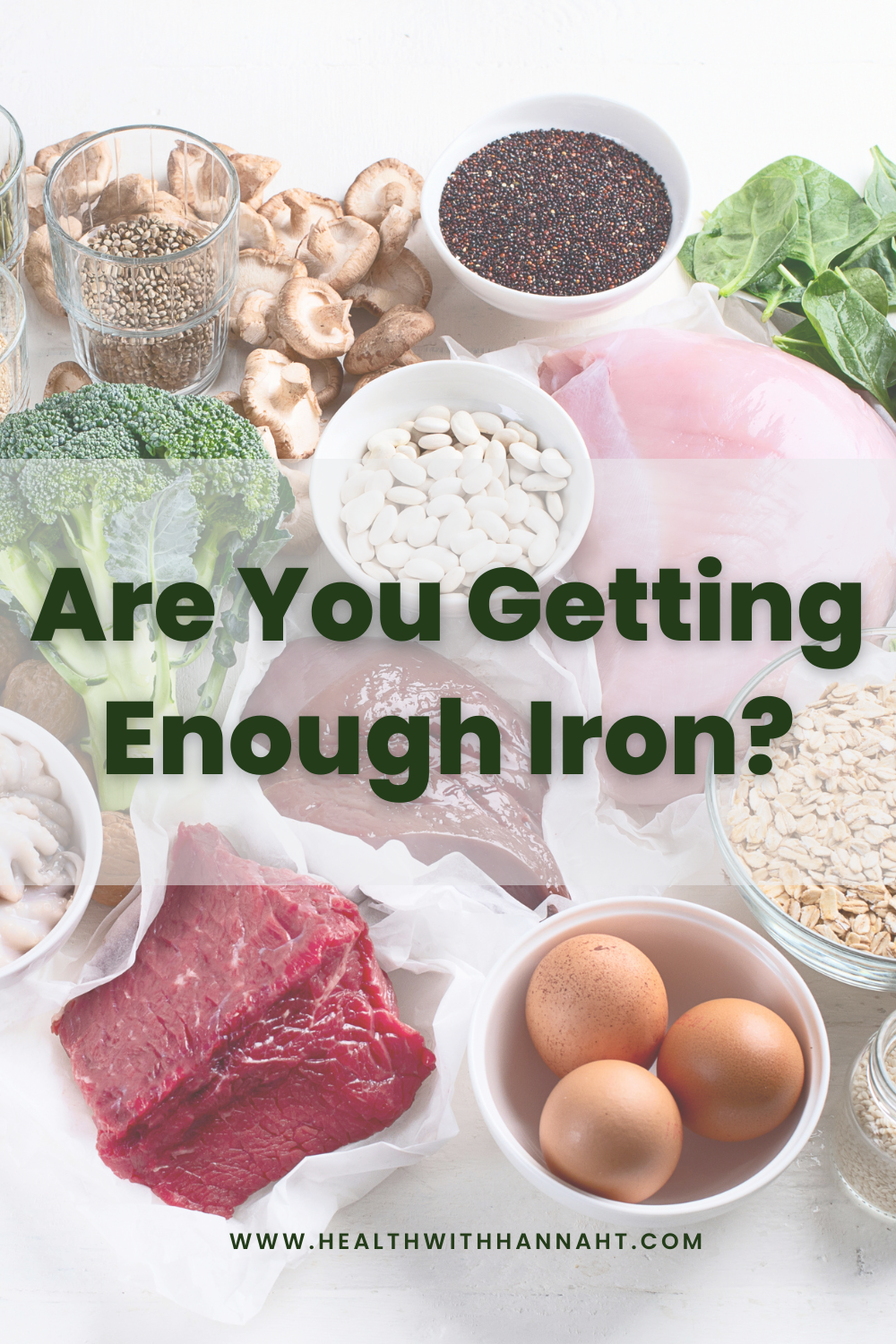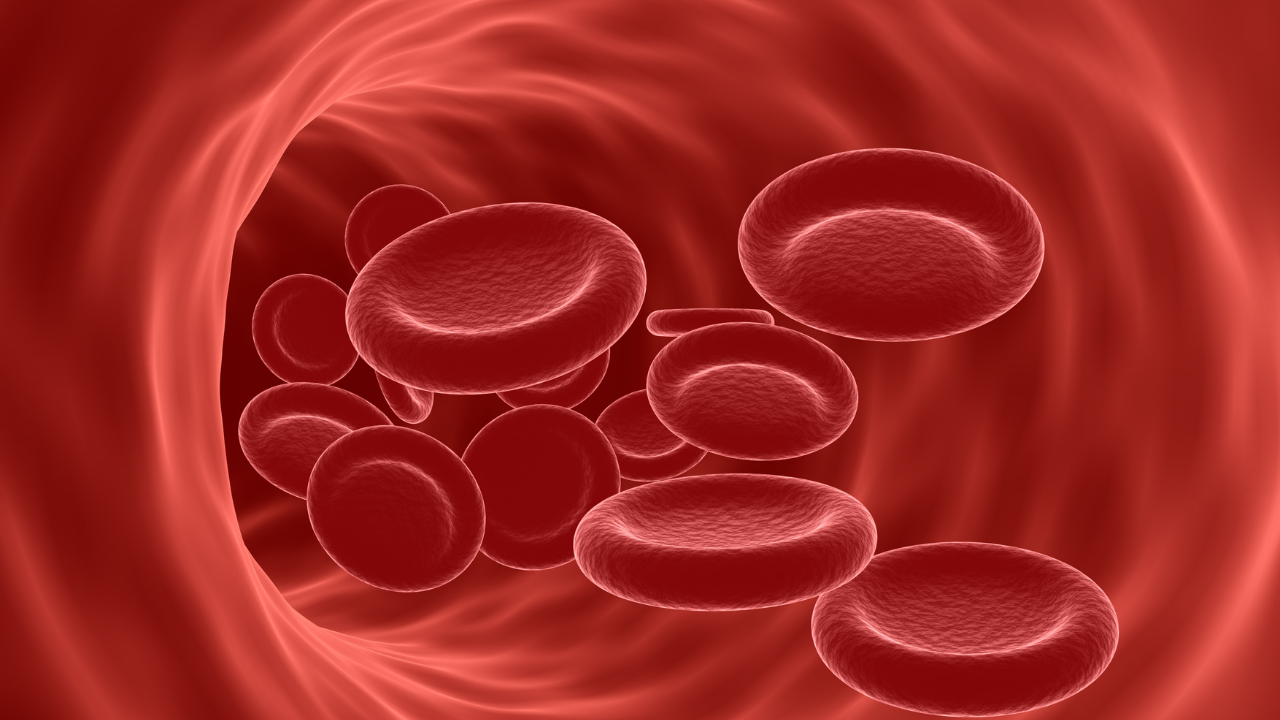Are You Getting Enough Iron?
DISCLAIMER: Links included in this blog might be affiliate links. Health with Hannah, LLC is a participant in the Amazon Services LLC Associates Program along with other affiliate programs. If you purchase a product or service with the links that I provide I may receive a small commission with no additional charge to you. Thank you for your support!
This one is for the menstruating and pregnant peeps!
Iron is an essential dietary mineral that plays a role in a variety of bodily functions. Iron deficiency is quite common and can be treated by eating plenty of iron-rich foods.
In this blog we will cover
What is iron?
Iron is an essential mineral that helps to transport oxygen throughout the body. Iron is needed to make hemoglobin, the part of red blood cells that take oxygen from the lungs, through the bloodstream, and to the tissues in need, such as your muscles and organs. Hemoglobin also transports carbon dioxide back to the lungs to be exhaled.
How much iron do you need?
Iron is not made in the body and must be absorbed from the food that we eat. Iron needs are measured in milligrams (mg). The general recommendations for iron intake are:
Adults assigned female at birth (ages 19-50 years): 18 mg iron per day
Pregnant adults (ages 19-50 years): 27 mg per day
Breastfeeding adults (ages 19-50 years): 9 mg per day
Older adults assigned female at birth (ages 51 years and older): 8 mg iron per day
Adults assigned male at birth (ages 19 years and older): 8 mg iron per day
The body stores extra iron and can tap into these stores when you do not eat enough food sources of this nutrient. If iron intake is chronically low, these stores can become depleted.
Types of iron
There are two different types of iron: heme iron and non-heme iron.
Heme iron
Heme iron comes from animal sources and is absorbed more efficiently by the body than iron from plant sources. Sources of heme iron include:
Beef
Poultry
Oysters, clams, mussels
Organ meats
Canned sardines
Non-heme iron
Non-heme iron can also be found in animal flesh (as animals consume plants with non-heme iron) as well as in plants and fortified foods. Sources of non-heme iron include:
Beans and lentils
Tofu
Nuts and seeds
Dark leafy greens
Potatoes with skin
Fortified cereals
Enriched rice and bread
Eat a variety of iron-rich foods is a great way to help your body absorb the iron that it needs. Eating foods high in vitamin C, such as tomatoes, citrus foods, and bell peppers, can also aid in iron absorption.
Signs of iron deficiency
If the body does not absorb the amount of iron that it needs and stores become depleted, iron deficiency can occur. Symptoms of iron deficiency appear when it has progressed to iron deficiency anemia, a condition where not enough red blood cells can be made to carry oxygen efficiently.
Symptoms of iron deficiency anemia include:
Fatigue
Weakness
Headache, dizziness, lightheadedness
Pale skin and fingernails
Brittle nails
Cold hands and feet
Pica (craving unordinary substances such as dirt, ice, or clay)
Iron deficiency anemia can affect anybody, with children and people who are menstruating or pregnant among those at highest risk. Those following a vegetarian or vegan diet may also be at risk if they are not consuming enough iron-rich foods. People with eating disorders and those who are dieting and chronically undereating are also at risk of iron deficiency.
Should you take an iron supplement?
Having too much iron can be toxic and even fatal. Even though iron supplements are available without a prescription, do not take an iron supplement without having your lab values tested to assess if you are iron deficient. Many of the symptoms of iron deficiency anemia are similar to other conditions. Incorrectly self-diagnosing and self-medicating can be a waste of money at best and result in dangerous health outcomes at worst.
Iron supplements may be helpful for those with diagnosed iron deficiency anemia, especially if iron stores are depleted. Your physician or dietitian can help you determine if a supplement is right for you. An iron supplement is typically used on a short-term basis while simultaneously prioritizing high-iron foods, with a long-term goal of maintaining adequate iron intake from food.
Iron supplements can be hard on the stomach and may cause some gastrointestinal distress. If you are taking an iron supplement, be sure to drink plenty of fluids and consume adequate fiber each day.
Dietitian’s tips to increase iron intake
Here are some ways to help boost your intake of iron and prevent iron deficiency:
If you eat animal products, incorporate lean beef, pork, poultry, and fish on the menu regularly.
Include foods high in vitamin C such as citrus juice and fruits, melons, dark-green leafy vegetables, and potatoes with your meals. This may help your body absorb more iron.
Eat adequate vitamin A. Vitamin A helps to release stored iron. Food sources of vitamin A include carrots, sweet potato, cantaloupe, salmon, butternut squash, bell peppers, and mango.
Be aware that the tannins in coffee, tea, and wine may reduce iron absorption. Calcium and phosphorus may also reduce the absorption of iron.
This is not something that you need to be too concerned about unless you are treating an iron deficiency.
Enjoy enriched and fortified grain products. Some cereals provide lots of iron and can help you meet your iron needs with ease, even if you follow a plant-based diet.
Examples of high iron cereal include:
Multigrain Cheerios (18 mg per 1 & 1/3 cup serving)
Grape Nuts (16 mg per 1/2 cup serving)
Special K (10-12 mg per serving)
Bran Flakes (9 mg per 1 cup serving)
Bottom line
Iron deficiency is quite common and can be treated by eating adequate iron-rich foods. It is especially important to prioritize iron intake if you are menstruating, pregnant, or follow a plant-based diet.
Did you find this post helpful? Let me know your thoughts in the comments below!
Learn more
Featured podcast episode
Featured video
Want more help on your diet ditching journey?
Join my signature membership to become part of a community of ex-dieters working towards food freedom and making peace with food so they no longer need to cut out their favorite foods.
More on the blog
Disclaimer: this post is for informational and educational purposes only and is not a substitute for professional medical advice.

































